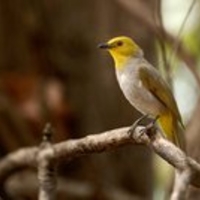Kalai Mani
Bharathidasan University, Zoology, Post-Doc
We studied the amphibian community structure, spatial overlap and herpetofaunal assemblage at Mannampandal, Tamil Nadu during October, 2010 to January, 2011. The survey methods involved careful visual estimation of amphibi-ans in all the... more
We studied the amphibian community structure, spatial overlap and herpetofaunal assemblage at Mannampandal, Tamil Nadu during October, 2010 to January, 2011. The survey methods involved careful visual estimation of amphibi-ans in all the possible microhabitats present in the study area. Five different microhabitat categories were selected, viz., leaf litters, temporary water pools, tree holes, shrubs & grasses (ground vegetation), pathways, open floor & outer edges of buildings. We identified 26 species of reptiles and 14 species of amphibians. There was a significant difference found among the amphibian species occupying in different microhabitats. Species diversity was calculated, Shanon-Wiener H'= 1.55. The high niche overlap was found between Duttaphrynus scaber and Uperodon systoma followed by Fejervarya sp. and Sphaerotheca breviceps. The present study on amphibian community is just a representation to show the micro-habitat occupancy and adjustment by the amphibians in hu...
